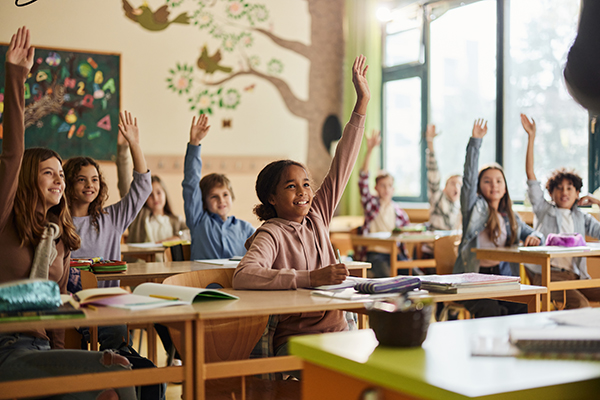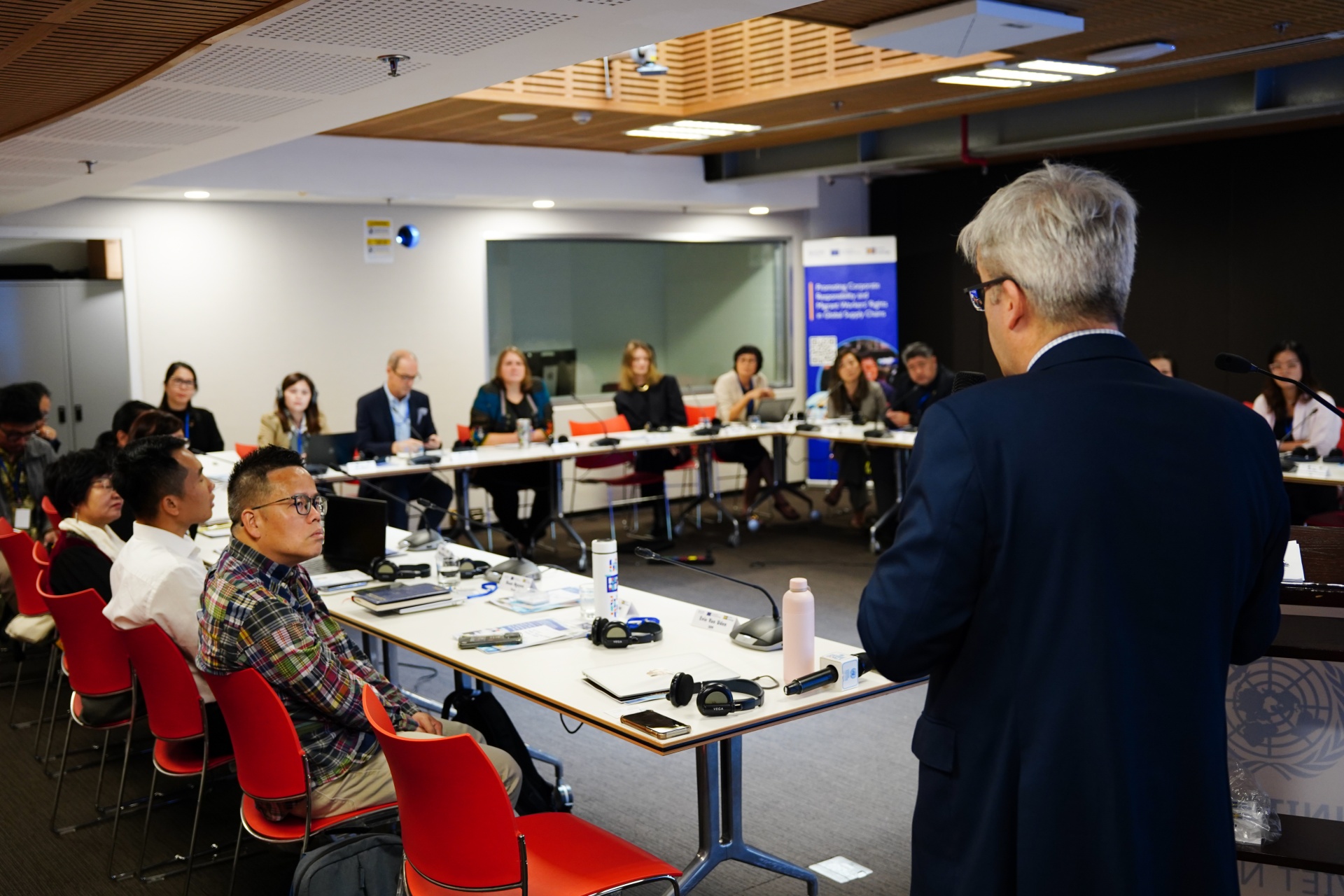UNESCO strengthens education for sustainable development in Cuba through technical support to the sector – unesco.org

Report on Education for Sustainable Development (ESD) Initiatives in Cuban Schools
Case Study 1: “Carlos Manuel de Céspedes” Primary School, Cienfuegos
This institution is actively implementing projects that align with key Sustainable Development Goals (SDGs) through its focus on coastal environmental protection and climate resilience.
Project Focus and Activities
- Sandy beach protection and climate change adaptation.
- Environmental monitoring programs.
- Educational workshops and practical drills.
- Application of learning assessment tools specifically for Education for Sustainable Development (ESD).
Competency Development and Outcomes
Students are developing critical competencies essential for sustainable development, including critical thinking, innovation, and environmental awareness. According to teacher María del Carmen Noche Gijón, the initiative has successfully transformed the mindset and actions of school staff, families, and the wider community. Students have become recognized “agents of change” by actively promoting environmental care and disaster risk preparedness.
Alignment with Sustainable Development Goals (SDGs)
- SDG 4 (Quality Education): The program directly supports Target 4.7 by ensuring learners acquire knowledge and skills needed to promote sustainable development.
- SDG 13 (Climate Action): Activities are centered on climate change adaptation and building resilience in a coastal context.
- SDG 14 (Life Below Water): The focus on sandy beach protection contributes to the conservation of coastal and marine ecosystems.
- SDG 6 (Clean Water and Sanitation): Students actively promote water conservation practices within their communities.
- SDG 11 (Sustainable Cities and Communities): The project enhances community-level disaster risk preparedness.
Case Study 2: “Mártires de la Familia Romero” Basic Secondary School, Sancti Spíritus
This secondary school has implemented two primary projects, “Health, Recreation and Environment” and “We Love and Protect Nature,” to integrate sustainability principles into its curriculum.
Project Focus and Activities
- Educational workshops and excursions.
- Recycling programs and awareness campaigns.
- Activities designed to foster an understanding of human impact on natural environments.
Competency Development and Outcomes
The projects foster competencies such as creativity, civic engagement, and systems thinking. School Principal Rogelio León Mendoza notes that students have developed a profound awareness of how their actions impact the environment. This has resulted in high levels of student engagement and a demonstrated commitment to environmental stewardship in their daily lives.
Alignment with Sustainable Development Goals (SDGs)
- SDG 4 (Quality Education): The projects provide practical ESD, equipping students with skills for sustainable lifestyles.
- SDG 12 (Responsible Consumption and Production): The inclusion of recycling activities promotes sustainable consumption patterns.
- SDG 15 (Life on Land): The “We Love and Protect Nature” project directly addresses the importance of protecting terrestrial ecosystems.
Analysis of SDGs in the Article
1. Which SDGs are addressed or connected to the issues highlighted in the article?
The article highlights several educational initiatives in Cuban schools that directly and indirectly connect to multiple Sustainable Development Goals. The core focus on environmental education and action-oriented projects links to the following SDGs:
- SDG 4: Quality Education – The entire article is centered on educational projects within schools that aim to develop key competencies and awareness in students.
- SDG 13: Climate Action – The projects explicitly focus on “climate change adaptation” and “disaster risk preparedness,” which are central themes of this goal.
- SDG 14: Life Below Water – The mention of projects for “sandy beach protection” directly addresses the conservation and sustainable use of marine and coastal ecosystems.
- SDG 12: Responsible Consumption and Production – The inclusion of “recycling” as a school activity connects to sustainable consumption patterns and waste reduction.
- SDG 6: Clean Water and Sanitation – The article notes that students “promote water conservation,” linking their learning to the sustainable management of water resources.
- SDG 11: Sustainable Cities and Communities – The focus on “disaster risk preparedness” education contributes to building resilient communities.
2. What specific targets under those SDGs can be identified based on the article’s content?
Based on the activities and outcomes described, several specific SDG targets can be identified:
-
Target 4.7: Ensure that all learners acquire the knowledge and skills needed to promote sustainable development.
- Explanation: The article is a clear example of this target in action. It describes how schools are implementing Education for Sustainable Development (ESD) through projects that teach students about environmental protection, climate change, and conservation. The text states that students develop “key competencies like critical thinking, innovation, and environmental awareness” and become “agents of change.”
-
Target 13.3: Improve education, awareness-raising and human and institutional capacity on climate change mitigation, adaptation, impact reduction and early warning.
- Explanation: The project at “Carlos Manuel de Céspedes” Primary School is explicitly focused on “climate change adaptation.” Furthermore, students learn about “disaster risk preparedness,” which directly contributes to building human capacity for climate impact reduction and early warning.
-
Target 14.2: Sustainably manage and protect marine and coastal ecosystems to avoid significant adverse impacts.
- Explanation: The project on “sandy beach protection” is a direct local action aimed at protecting coastal ecosystems, which aligns with the goal of this target.
-
Target 12.5: By 2030, substantially reduce waste generation through prevention, reduction, recycling and reuse.
- Explanation: The activities at “Mártires de la Familia Romero” Basic Secondary School include “recycling, and awareness campaigns,” which directly contribute to the principles of reducing waste generation.
-
Target 6.b: Support and strengthen the participation of local communities in improving water and sanitation management.
- Explanation: The article mentions that students “promote water conservation, and share at home what they learn in class.” This demonstrates the participation of students (as part of the local community) in promoting better water management practices.
-
Target 11.5: By 2030, significantly reduce the number of deaths and the number of people affected…caused by disasters…with a focus on protecting the poor and people in vulnerable situations.
- Explanation: By teaching students about “disaster risk preparedness,” the schools are contributing to building community resilience. Educating the younger generation is a key strategy for long-term disaster risk reduction, which is the aim of this target.
3. Are there any indicators mentioned or implied in the article that can be used to measure progress towards the identified targets?
The article does not provide quantitative data but implies several qualitative and activity-based indicators for measuring progress:
-
For Target 4.7 & 13.3 (Indicator 4.7.1/13.3.1): Extent to which (i) global citizenship education and (ii) education for sustainable development are mainstreamed in curricula.
- Implied Indicator: The existence and implementation of specific school projects like “Health, Recreation and Environment” and “We Love and Protect Nature” serve as a direct indicator. The article also mentions the school “applies learning assessment tools for ESD,” which is a concrete measure of mainstreaming these concepts into the educational process.
-
For Target 14.2:
- Implied Indicator: The active participation of students in “sandy beach protection” projects. The number of students involved and the frequency of activities like “environmental monitoring” could be used as measures of progress.
-
For Target 12.5:
- Implied Indicator: The establishment of recycling programs and awareness campaigns within the schools. The volume of materials recycled or the number of students participating in these campaigns would be a way to measure impact.
-
For Target 6.b & 11.5:
- Implied Indicator: The change in behavior and awareness within the community. The teacher’s quote, “I have managed to transform not only the way the school staff thinks and acts, but also the families and the community,” suggests a measurable shift. Furthermore, the fact that students “share at home what they learn in class about disaster risk preparedness and environmental education” is an indicator of knowledge dissemination and community engagement.
4. Summary Table of SDGs, Targets, and Indicators
| SDGs | Targets | Indicators (as identified or implied in the article) |
|---|---|---|
| SDG 4: Quality Education | 4.7: Education for sustainable development and global citizenship. | Implementation of ESD projects in schools; use of “learning assessment tools for ESD”; development of student competencies (critical thinking, environmental awareness). |
| SDG 13: Climate Action | 13.3: Improve education and awareness on climate change. | Inclusion of “climate change adaptation” and “disaster risk preparedness” in school curricula and activities (workshops, drills). |
| SDG 14: Life Below Water | 14.2: Protect and restore marine and coastal ecosystems. | Active student participation in “sandy beach protection” projects and “environmental monitoring.” |
| SDG 12: Responsible Consumption and Production | 12.5: Substantially reduce waste generation. | Implementation of “recycling” activities and “awareness campaigns” in schools. |
| SDG 6: Clean Water and Sanitation | 6.b: Support local communities in water management. | Students actively “promote water conservation” at home and in the community. |
| SDG 11: Sustainable Cities and Communities | 11.5: Reduce the adverse effects of natural disasters. | Students learning and sharing knowledge about “disaster risk preparedness.” |
Source: unesco.org

What is Your Reaction?
 Like
0
Like
0
 Dislike
0
Dislike
0
 Love
0
Love
0
 Funny
0
Funny
0
 Angry
0
Angry
0
 Sad
0
Sad
0
 Wow
0
Wow
0
















































/environment-climate-change-and-health-(ech)/water-sanitation-hygiene-and-health-(wsh)/landfill-tuvalu-36092.tmb-1200v.jpg?sfvrsn=5c21fe40_1#)

.jpg.webp?itok=0ZsAnae9#)
























